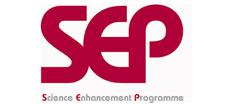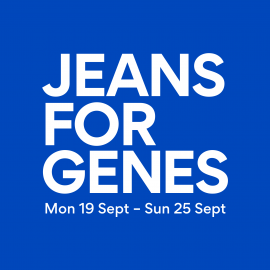Genome and Gene expression
Students find the topics of genome and gene expression difficult. Through exposure in the media and popular science, students are often aware of a range of terms such as: DNA, chromosome, genes, genetic engineering etc and they know that genes are used to carry information.
However, this over exposure can lead to misinformation and misconceptions with students understanding; they struggle to appreciate the relative size of DNA, the nucleus and the whole cell, as media images often appear to show DNA and genes as something which appears visible. Using animations and images can help to put the structure of DNA into context and appreciate the scale of DNA molecule and chromosomes.
The level of detail that is required in the study of DNA is also not always understood by students, students must be able to describe DNA as a polymer made from four different nucleotides, and they must know that each nucleotide consists of a common sugar and phosphate group with one of four different bases attached to it. Students must also be able to give a simple description of protein synthesis, which includes explaining how DNA structure affects the proteins made in protein synthesis. This requires some time to deliver and careful planning is required to ensure that this content is covered effectively.
Whilst this list provides a source of information and ideas for experimental work, it is important to note that recommendations can date very quickly. Do NOT follow suggestions which conflict with current advice from CLEAPSS, SSERC or recent safety guides. eLibrary users are responsible for ensuring that any activity, including practical work, which they carry out is consistent with current regulations related to Health and Safety and that they carry an appropriate risk assessment. Further information is provided in our Health and Safety guidance.
Origami DNA
Activities that help students to understand the structure of DNA are very valuable.
Making a model of DNA using a template can be a useful way of showing students how DNA forms the classic double helix form.
The activity includes templates and instructions. Once students have made the model, they can be challenged to make a different representation using simple ‘raw materials’ such as thin card, sticky tape and lolly-ice sticks. This will help them to further explore their understanding of the molecule, as they will need to create a representation from scratch.
The activity can be completed by reminding students that Watson and Crick (Nobel prize winners) used models to discover the structure of DNA.
Make Your Own Mucus and Extracting DNA
In this video produced by Nowgen there are two practical activities demonstrated: making mucus and extracting DNA, it is the second one which is relevant for this topic.
In this practical activity the method for extracting DNA is relatively simple using mouthwash containing cheek cells. Along with the video, which is useful for both teachers and students there is an accompanying instruction sheet.
Inherited Diseases
This Catalyst article is all about chromosomes: in particular, the article looks at genes and explains how the chromosomes and genes a human inherits from their parents can cause problems such as sickle-cell anaemia, cystic fibrosis and Huntington's disease.
The article provides a good reminder of the process of cell division and has some useful illustrations.
The level of detail about the coded instructions in DNA is described clearly and the context of mistakes in this coding sequence leading to possible diseases and conditions will help students to understand the importance of the process.
The article could be used as a focus for a small group activity, with students challenged to represent the process of protein synthesis in a flow diagram, or series of steps, or they could be asked to produce a glossary of all the important terms used in the article.
There are many ways to make effective use of Catalyst articles such as this. A booklet has been produced which provides ideas on how Catalyst articles can be used with students and includes six exemplar activities. This booklet can be accessed at: https://www.stem.org.uk/elibrary/resource/27308>
Treating Genetic Conditions
This is a simple activity, designed for Key stage 3, to introduce genetic conditions and how gene therapy is being developed to try to treat them.
Students undertake a simple modelling activity to investigate chromosomes in a nucleus, representing this using string or wool and moving about the classroom.
There are then some questions to answer on a provided worksheet.
This resource, from Genetic disorders UK, links with the topic of inheritance and is part of a collection of materials about a boy who has a rare genetic condition.
This activity is useful as a recap on Key stage 3 knowledge and as a starter for further work on this topic.
Ceri Evans' Masterclass: DNA
This is a resource for teachers.
This video shows an active lesson about DNA. It looks at the base pairs in DNA and how the DNA sequence is translated into the amino acid sequence of a protein.
Watching the video will provide teachers with some concrete and accessible ways to teach the topic of DNA.
DNA Sequence Bracelets
This resource from the Sanger Institute, is a craft based activity most suitable for classroom use or science festivals where students make a DNA sequence bracelet that carries part of the code of an organism such as a human, trout, chimpanzee or butterfly.
The activity reinforces the principle of complementary base pairs as they are given one strand of the sequence and they have to match up the other strand correctly.
Yummy Gummy DNA *suitable for home teaching*
This resource produced by the Wellcome Trust Sanger Institute, requires students make their own edible DNA double helix model out of Jelly Babies and cocktail sticks.
Through this activity students are learning about the basics of DNA structure and complementary base pairs.





